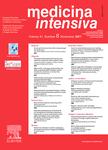版权所有:内蒙古大学图书馆 技术提供:维普资讯• 智图
内蒙古自治区呼和浩特市赛罕区大学西街235号 邮编: 010021

作者机构:Department of Intensive Care Medicine Laboratory for Critical Care Computational Intelligence Amsterdam Medical Data Science Amsterdam Public Health Amsterdam Cardiovascular Science Amsterdam Institute for Infection and Immunity Amsterdam UMC University of Amsterdam Vrije Universiteit Amsterdam The Netherlands Department of Anesthesiology Intensive Care and Pain Management Sestre Milosrdnice University Hospital Center Zagreb Croatia. Electronic address: l.lijovic@amsterdamumc.nl. Department of Anesthesiology Intensive Care and Pain Management Sestre Milosrdnice University Hospital Center Zagreb Croatia. Department of Intensive Care Medicine Laboratory for Critical Care Computational Intelligence Amsterdam Medical Data Science Amsterdam Public Health Amsterdam Cardiovascular Science Amsterdam Institute for Infection and Immunity Amsterdam UMC University of Amsterdam Vrije Universiteit Amsterdam The Netherlands.
出 版 物:《Medicina intensiva》
年 卷 期:2025年
页 面:502136页
学科分类:10[医学]
主 题:Bases de datos Big data Critical care Cuidado intensivo Database Insuficiencia respiratoria Noninvasive ventilation Respiratory failure Ventilación no invasiva
摘 要:OBJECTIVE:To determine whether the ROX index and its variations can predict the risk of intubation in ICU patients receiving NIV ventilation using large public ICU databases. DESIGN:Retrospective observational cohort study. SETTING:Patient data was extracted from both the AmsterdamUMCdb and the MIMIC-IV ICU databases, which contained data related to 20,109 and 50,920 unique patients. PATIENTS:Non-invasively mechanically ventilated. INTERVENTIONS:Retrospective review of variables. MAIN VARIABLES OF INTEREST:To assess the predictive values of models for each index, the ROX and its variations mROX, ROX-HR and mROX-HR were calculated based on mean values of SpO, respiratory rate, FiO and PaO from 2-h windows within the first 12 h of NIV. RESULTS:3344 patients were eligible for analysis of which 1344 were intubated, died or returned to NIV within 24 h of ending NIV. NIV failure group had higher SOFA scores and higher CRP levels at admission. There was no difference in duration of NIV therapy or 28-day mortality, but patients who failed NIV had longer length of stay. The best performing index was ROX with an AUROC of 0.626 at 10-12 h. All other indices for all other time windows were less discriminating. CONCLUSIONS:The performance of ROX index and its variations to predict NIV failure in ICU patients across large public ICU databases was moderate at best and cannot currently be recommended for clinical decision support.